 Your new post is loading...
 Your new post is loading...
Despite great strides, journalists around the world are not keeping pace with the transformations of the digital era. That is the conclusion of the first-ever global study on how news media are adopting new technologies, conducted by the International Center for Journalists (ICFJ). Against this background of immense challenges for the news industry, there is some good news: Digital news is making tremendous headway worldwide. The journalism community has long discussed how the digital revolution is impacting news media. Our study, The State of Technology in Global Newsrooms, focuses on a missing link in this debate: What technologies are journalists around the world using and how? We conducted the survey in 12 languages, and heard from more than 2,700 newsroom managers and journalists from 130 countries. This massive response identifies specific challenges the industry faces: a technology gap, unmet training needs, lack of audience engagement, concerns about building trust, an information security shortfall, and new revenue streams. The study also identifies the digital leaders and laggards....
It was a case study in the difficulty of covering national political conventions, hurry-up-and-wait affairs that feature a tricky combination of canned speeches and bouts of breaking news at nearby protests. Even in an epicenter of media scrutiny, it's impossible for news organizations to have someone at every street corner. That's why, when the Republican National Convention kicks off in Cleveland Monday, BuzzFeed will have a reporter in everyone's pocket. On Sunday, BuzzFeed launched BuzzBot, an automated chatbot for Facebook's Messenger app. The bot, developed by BuzzFeed's Open Lab (an R&D skunkworks based in San Francisco), is capable of having a limited back-and-forth with users to gather news about the convention throughout the week.It works like this: Users can open up the Facebook Messenger app and search for BuzzFeed News (or follow this link) to open up the dialogue. Then, BuzzBot will begin asking users a series of multiple-choice questions related to the convention: Are they following the news? If they live in Cleveland, are they attending, protesting or living there?...
Six years ago, at a high school event in suburban New Jersey, Michael Shapiro was covering the story for a hyper-local news site he had founded two years earlier when he spotted a journalist from an established local print newspaper from the same town. “I extended my hand to shake hers,” he recalls, “and she turned around and walked away. People who saw it, their eyes opened wide. They couldn’t believe it.” Those were the early days of Shapiro’s foray into hyper-local news. He was a former lawyer who was building a network of websites covering towns in New Jersey, and some of the state’s old-guard journalists, didn’t like it. Getting the cold shoulder from them, he says, was not unusual. “They saw us as a threat,” says Shapiro. “It was also a matter of, ‘ Who are you to come into my town,’ as if it’s their town.” But things have changed considerably since then. Now, Shapiro presides over a rapidly expanding network of 51 hyper-local franchises dotted throughout New Jersey and, more recently, New York state. (Two more just signed on and will launch this spring. A brief expansion into Pennsylvania failed.)...
Business Wire’s 2015 Media Survey is now available and it offers startling results about how journalists see the future of news media. The landscape of media is changing – new platforms and new styles. The New York Times is an institution but it didn’t start off as one. How will we be referring to BuzzFeed decades from now? Will the two seemingly different lines of media style intersect at some point in the future? These questions are part of the debate regarding the future of media and journalists are split.
According to an article published in The Guardian back in 2013, BuzzFeed is described as an, “irreverent US news and entertainment website taking the social web by storm” and investor Kazz Lazerow, co-founder of Buddy Media, described the website as “the defining media company for the social age.”
Only a few years ago, BuzzFeed represented the wave of change the digital age brought upon news media and that wave has only continued to grow. Now, BuzzFeed is challenging traditional forms of news, jockeying to become the standard of journalism.
When asked to decide between The New York Times style and the BuzzFeed style, journalists made clear that while the classical form isn’t going anywhere, it will have to share its place at the top....
For traditional media companies looking for an alternative, Blendle may have an answer. The website essentially acts as “Spotify for journalism.“ It’s a reinvention of the newsstand, built for the Internet, where readers pay by the article instead of per issue or through a monthly subscription.
This all occurs seamlessly in a way that prioritizes the user: your credit card information is stored on the site for easy payment, and an unorthodox refund option allows users to get their money back if they’re not satisfied with the piece.
Traditional publishers seem to be excited by Blendle’s potential to provide a desperately needed new revenue stream. The New York Times (a Blendle investor), the Wall Street Journal and the Washington Post have already signed up, and more American publishers are likely on the way...
In a break from making millions as the world’s richest ad man, Sir Martin Sorrell was asked how best to understand the new media landscape. Visit the headquarters of Vice Media, said the head of WPP. Later he said: “They understand how millennials think, what content millennials want.”
The enthusiasm of 69-year-old Sorrell, whose company owns a 10% stake in Vice, is shared by many of his media mogul friends. That the Murdochs, via 21st Century Fox, Disney’s Bob Iger and the co-founder of MTV Tom Freston all provide cash-backed enthusiasm for Vice suggests they believe that the company, which started life as a “punk magazine” in Montreal in 1994, could understand young people better than News Corp, Disney or any other more traditional media company.
But how? Vice, with its gonzo-style journalism and access-all-areas attitude (typical headline: I Went Undercover in America’s Toughest Prison), is not easy to define. Yet it has somehow come to define a new media age of shareable video content, mostly because of its success – real or perceived – among young people. For these so-called “millennials” – roughly born between 1980 and 2000 – offer a sort of fountain of youth for a media industry faced with ageing readers and viewers, and distribution models still being disrupted by the internet....
To close out 2014, we asked some of the smartest people we know to predict what 2015 will bring for the future of journalism. Here’s what they had to say.
In my ‘digital thinking’ class, the goal is for students to emerge fully literate in the changes affecting journalism. Here are the main currents and trends that I expect them to master by the close of the term.
For each, they should understand: What it means, why it’s important, and where things are going with it. I’ve added a link or two to help get you started. And I’m happy to receive your comments about what’s missing from this list....
Earlier this month, folks from Google invited me along with Kara Swisher and Audrey Cooper for a conversation about the future of news.
Towards the end of the conversation, we were asked what Google could do in order to help the news and media industry. Obviously, we joked about buying the New York Times, but when asked, I pointed out that Google is good at one thing — software — and instead of trying to do crazy things, why not build tools that help the news ecosystem? Why not create tools that help data novices make sense of information? Or how about a smarter, simpler and more nimble analytics tool just for reporters? (Or simply buy Chartbeat!)
I forgot to mention one tool that they could build in their sleep, and in the process help not only save many reporter hours but make the news better, smarter and more contextual.
That tool is search — not the Google search as we know it, but a different version of Google-powered search tool that allows reporters to see in real-time past stories from across the web. That’s not all — the search tool would also provide contextual information about various topics, whether through Wikipedia or some private archive like Lexis-Nexis. There is a crying need for this tool, especially in today’s hyperactive media environment....
F...It may have been coincidental, but around the time this new truism started sinking in, we began to see investment in businesses both new and old that promised serious journalism. Facebook cofounder Chris Hughes bought The New Republic; Jeff Bezos bought The Washington Post; eBay billionaire Pierre Omidyar pledged $250 million to fund First Look Media, which hired Glenn Greenwald, one of the reporters who broke the Snowden revelations in The Guardian. Vox Media, home of tech site the Verge, raised $38 million and BuzzFeed $35 million in new rounds of funding.
With money has come innovation, both in journalism itself and in the tools to produce it. When Ezra Klein left the Post's Wonkblog for a new site funded by Vox Media, it was in part because Vox had built a sophisticated content management system designed with mobile readers in mind. Atavist—founded by WIRED alumni Evan Ratliff and Nicholas Thompson as a net-native platform for magazine-style journalism—built a similar platform that it licenses to other publishers. Such tool sets make it simple to create a seamless mix of text, video, music, maps, charts—a mix that, done right, spells the difference between just reading a story and taking a deep dive. Now this kind of enhanced storytelling is turning up in places beyond journalism, like the Brookings Institution's Brookings Essay, an online series typified by historian Margaret MacMillan's 7,000-word thought piece on the parallels between 1914 and 2014....
The Reuters Institute Digital Report reveals new insights about digital news consumption based on a representative survey of online news consumers in the USA, UK, Germany, France, Denmark, Finland, Spain, Italy, Urban Brazil and Japan.
This year's report reveals new insights about digital news consumption based on a YouGov survey of over 18,000 online news consumers in the UK, US, Germany, France, Italy, Spain, Brazil, Japan, Denmark and Finland.
This website contains data about the growth of tablets and smartphones, generational and country based differences in media usage. Also analysis on the role of impartial news in a digital world and the role of social media in finding and distributing news....
In May, a significant threshold was crossed: In the U.S., 60 percent of global online activity now happens via mobile devices – up 10 percent from the previous year. Perhaps even more significantly, “mobile apps accounted for more than half of all digital media time spent in May,” according to commercial analytics specialist Comscore.
The most mobile-driven platforms are digital radio, image-based sites like Instagram and Flickr, maps and instant messaging services. However social media overall is rated by Comscore as the number one category in terms of “overall digital engagement” with 70 percent of content now generated via mobile....
BYA decade ago, aspiring journalists could just think about journalism and leave the financial side to others. Now, to be a successful journalist you have to think like an entrepreneur and understand something about the business you’re in.
There have been some ups and downs, to say the least. In the early days, we had the lonely thrill of being “Web pioneers.” Back then, we developed some of the key forms and hallmarks of digital media: news aggregation, blogs, slideshows, the more personal, conversational tone of Web writing and headlines. In 1998, we were the first news site to try a paywall. In 1999, we were the first to get rid of one.
A land rush doesn’t mean serious journalism has turned into a great business. But talent and money flocking to our trade is preferable to a wholesale exodus....
|
The publication of the annual Digital News Report, from the Reuters Institute for the Study of Journalism at Oxford University, is eagerly awaited by news execs around the world. So much so, that the 2017 study is being accompanied by major presentations on June 22 at the GEN Summit in Vienna, and at the Tow Center for Digital Journalism at Columbia University in New York. Clocking in at 133 pages, this sixth annual study, has been expanded to cover 36 different markets around the world (the first, in 2012 examined just five countries), shedding light on many countries – including nations featured for the first time such as Mexico, Malaysia, Croatia and Romania – which are seldom reported in English-language media. Against this backdrop it’s fascinating to determine some of the similarities – and differences – between digital news habits in the U.S. and the rest of the world. With that question in mind, here are seven important developments worth highlighting....
Did a robot write this article? No, but it could have. This isn’t the plot of a dystopian Philip K. Dick novel, but an emerging journalistic reality. You may already have read material produced by a machine without even realising it. To adapt William Gibson, “the robo-journalism future is already here – it’s just not very evenly distributed.” So how might this technology evolve? And as journalists, should we consider robo-journalists friends or foe? The Associated Press (AP) revealed in January 2015 that it “is now automatically generating more than 3,000 stories about U.S. corporate earnings each quarter.” It noted that this represented “a tenfold increase over what AP reporters and editors created previously.”...
Facebook and Twitter are increasingly becoming news sources for its users, but news is not necessarily the reason why people are logging onto these social networking sites. It just so happens that news ends up being part of the social media experience. That’s according to a new report from the Pew Research Center. "One of the things we saw early on is the degree to which people describe this as 'incidental news...And that's something that's being reinforced." -- Amy Mitchell, director of journalism research for the Pew Research Center The findings cement the fact that both users and news organizations must continue to wrestle with social media, its different features and their implications. “Social media is certainly a part of Americans’ news streams, and it’s going to continue to be a part of that,” said Amy Mitchell, director of journalism research for the Pew Research Center. “And the different ways people connect with these platforms will influence how they learn about their communities and the world.”...
According to data published by the Reuters Institute for the Study of Journalism, very few people consider print newspapers their main source of news anymore. Today's most important news sources are television and online media, with social networks taking on an increasingly large role in people's news consumption.
As people turn to other media outlets as their primary source of information, print newspapers are probably best advised to accept their new role and focus on their core strengths, which are local reporting, investigative journalism and in-depth analyses of national and global affairs.
This chart shows which news sources people from five different international markets consider the most important one to them personally....
The fast pace of the modern lifestyle—born from high-speed, hand-held, wireless connectivity—has not only changed the way we send, receive, and consume information, but has transformed the way journalists operate. This has led some of them to make a concerted effort to slow down and take a different tack.
“Slow Journalism is deep journalism—journalism that is informed by deep immersion in the story at ground level,” explains National Geographic Fellow Paul Salopek.
Salopek is conducting an experiment in this modern expression of a timeless human pursuit. He’s engaging with major stories of our time at the natural speed of his own footsteps as he retraces our ancestors’ migration from Africa to South America with his Out of Eden Walk. Along the way he’s not just looking for the latest news updates, he’s revealing the texture of the lives of people he encounters: nomads, villagers, traders, farmers, and fisherman who live within front-page stories, but normally don’t make the news themselves....
I am neither a fan nor a maker of sweeping future-of-media predictions. But I will lighten up this holiday season with a few thoughts on business trends of 2014 likely to gain momentum in 2015.
Top of my list — by a wide margin — is whether non-broadcast video can mount a serious business challenge to the news offerings of the networks, local stations and cable
.This one takes a little explaining. Leading national news outlets — The Wall Street Journal, The New York Times and the Associated Press — have been offering video reports online for at least a decade.CNN, the Today show and a host of other news/talk programs have well-trafficked digital sites.
And by now we all know of a little company named Vice, whose principal news product is longish first-person video reports, many from abroad. A trio of lurking questions intrigue me:...
Virtual reality is ascendant, and it’s time for media outlets to take notice. Why? Consumer access to VR devices is about to take off thanks to ambitious prototypes from Oculus Rift and, in the past year, several major projects have redefined immersion journalism.In September,
The Des Moines Register released Harvest of Change, a detailed tour of one family farm in Iowa. In January, Nonny de la Peña and the USC School of Cinematic Arts debuted Project Syria at the World Economic Forum. Project Syria is a full-body experience that places viewers at the scene of a bombing, then allows them to explore a refugee camp. And October’s round of Knight Prototype Fund grants included support for a blockbuster collaboration collaboration between The Tow Center for Digital Journalism at Columbia University’s Graduate School of Journalism, Frontline, and Secret Location, an interactive digital agency.
These organizations are working together to produce a documentary work focused on the Ebola crisis and will share best practices and strategies for producing virtual reality-augmented journalism once they’ve finished.These new forms of journalism are ambitious documentary enterprises, comprising many team members, cross-organizational partnerships, and potentially shocking prices to those familiar with prose journalism budgets. (Harvest of Change was produced for under $50,000.)
But this work is also providing valuable, vital public services with remarkable emotional punch. Full-body journalism is a remarkable tool for encouraging empathy through what de la Peña calls “presence....
...Such missteps are not surprising. People living through a time of revolutionary change usually fail to grasp what is going on around them. The American news business would get a C minus or worse from any fair-minded professor evaluating its performance in the first phase of the Digital Age. Big, slow-moving organizations steeped in their traditional ways of doing business could not accurately foresee the next stages of a technological whirlwind.
Obviously, new technologies are radically altering the ways in which we learn, teach, communicate, and are entertained. It is impossible to know today where these upheavals may lead, but where they take us matters profoundly. How the digital revolution plays out over time will be particularly important for journalism, and therefore to the United States, because journalism is the craft that provides the lifeblood of a free, democratic society....
...Imagine, though, if it turned out that serious news consumers didn’t care about that stuff. Not just teens or those who get all their news from Buzzfeed lists and trending hashtags — but if actual, grown up readers didn’t give a flying toss about church and state.
If that were the case there’d be nothing to stop every financially-challenged newsroom (i.e. every newsroom in the world) from joining the race to the bottom: Selling every headline to the highest bidder, giving every book a positive review (with an affiliate link at the bottom, of course, or even becoming a full-fledged ecommerce company. News organizations, after all, are supposed to serve their readers, and if readers want a completely bought-and-paid-for news agenda, how long will it be until they get their wish?
Judging by the depressing reaction to the Bezos-owned Washington Post’s move to insert giant Amazon affiliate buttons into its news stories, that future might not be far off....
In the last few weeks the shooting down of Malaysia Airlines Flight 17, the Ukrainian crisis and the situation in the Gaza Strip are monopolizing media attention....
Last Wednesday the Twitter account of the Associated Press posted this tweet: BREAKING: Dutch military plane carrying bodies from Malaysia Airlines Flight 17 crash lands in Eindhoven.
The news was verified, the tweet was not wrong from a grammatical point of view, however there was an ambiguity whereby if the word 'crash' is read as a part of the verb 'crashland' rather than as a noun, the meaning becomes the plane which was carrying the bodies of the passengers of the MH17 had crashed. A little later, the account clarified the misunderstanding, but the damage was done with the tweet wrongly interpreted and already shared by thousands of people, sparking the most varied reactions.
The episode has prompted Megan Garber of The Atlantic to write a piece about the use of "breaking news" designation. According to Garber, it was not a necessary piece of news to add to many others re-launched as indispensable 'breaking news' (a plane has landed, after all: it is news in an article, in a context, but not breaking news itself). It is useless to engulf the news ecosystem. "The term 'breaking' is quickly losing its meaning," Garber explains, in agreement with what Felix Salmon stated during the last edition of the International Journalism Festival....
Travel agent. Meter reader. Newspaper reporter.
They’re all among CareerCast’s 2014 list of endangered jobs, with the hiring outlook for newspaper reporter positions expected to drop 13 percent by 2022, according to the company’s forecast.
“Declining subscription and dwindling advertising sales have negatively impacted the hiring power of some newspapers, while others have ceased operations altogether,” the company writes in a 38-word epitaph for the field.
“Online outlets continue to replace traditional newspapers, and the long-term outlook for newspaper reporters reflects the change.”...
...Chief among the findings was that many young consumers craved more in-depth news but were unable or unwilling to get it. “The abundance of news and ubiquity of choice do not necessarily translate into a better news environment for consumers,” concluded the researchers in their final report. “Participants in this study showed signs of news fatigue; that is, they appeared debilitated by information overload and unsatisfying news experiences .
. . . Ultimately news fatigue brought many of the participants to a learned helplessness response. The more overwhelmed or unsatisfied they were, the less effort they were willing to put in.
”The idea that news consumers, even young ones, are overloaded should hardly come as a surprise. The information age is defined by output: we produce far more information than we can possibly manage, let alone absorb..
|



 Your new post is loading...
Your new post is loading...



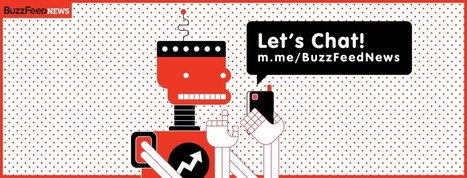
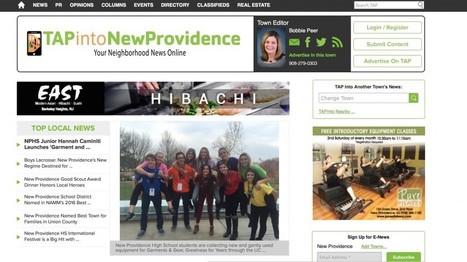
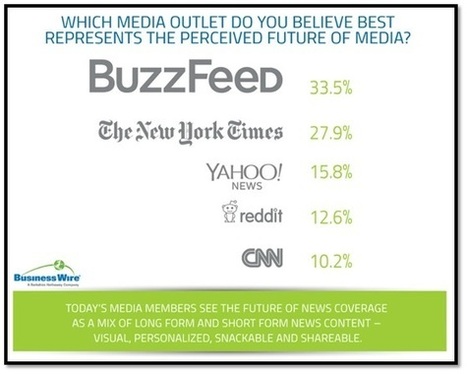





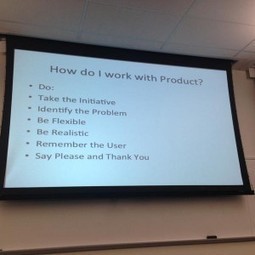

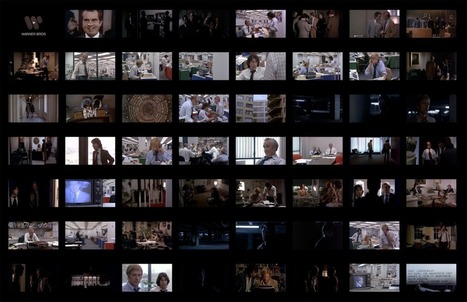









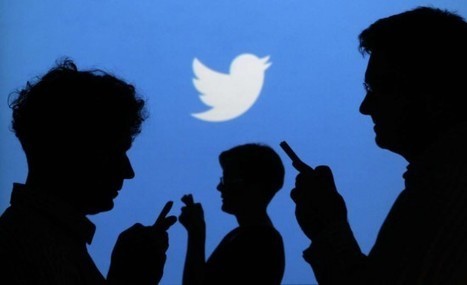















This piece is co-authored by Sharon Moshavi and Fatima Bahja. Despite great strides, journalists around the world are not keeping pace with the transformations of the digital era.